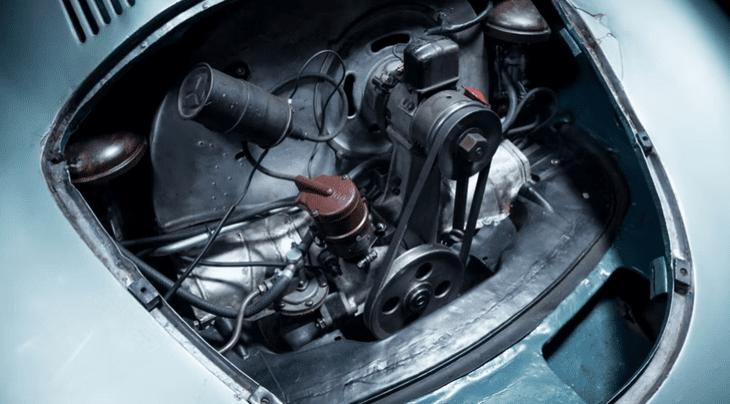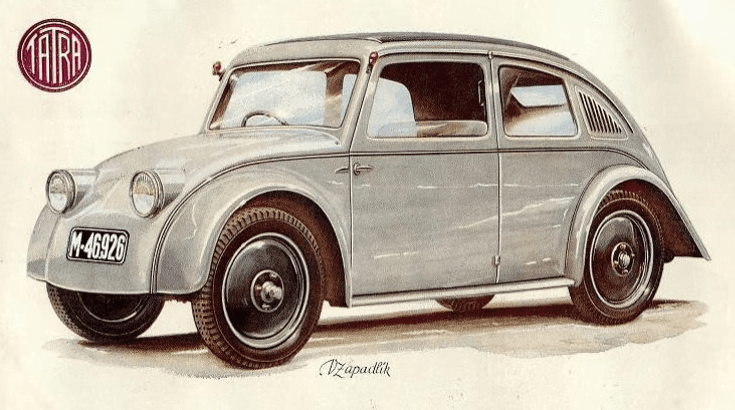Porsche and their rear-engined cars are known and loved by the entire world, there is no way Porsche would have been the same without their iconic and game-changing rear-engine configuration, although, how they figured out that specific engine layout is still unknown and questioned the petrol community.
When a car enthusiast brings up the conspiracy or a point that Porsche might have gotten heavily inspired by the rear-engined Tatra’s instead of coming up with their own ideas, all hell reigns loose in the car industry. It is such a controversial topic and idea, that it’s barely talked about because people are afraid of probably getting jumped by Porsche fanatics. But I think It’s finally time it should be talked and argued about. Without getting inspired by many companies and manufacturers we wouldn’t have the cars we have and love today, everybody learns from somebody, and all great ideas are passed around and made their own.
There is nothing wrong with being inspired, and everyone, not just car companies, has been inspired at some point in their life. Whether it was when Packard made the Twin-six engine configuration and everyone followed in suit, or when Jaguar developed and put disc brakes on the C-Type, or even when Bugatti made the Type 57SC Atlantic, every pre-war luxury car design was just a toned down Atlantic after that. As soon as the car was invented, people have always wanted to go faster. The 1920s-1930s were not shy of that, they were decades of test and trial, the automobile was still a fairly new invention, and all engineers, mechanics, artists, designers, and companies were looking to create new technology and innovations to make cars even faster and more reliable. But since no one knew how to do it, they just dipped their toes into the unknown world of automotive.
Duesenberg was all about their massive, powerful, and advanced engines as the Chrysler Airflow was all about aerodynamics. However, people don’t like cars that are ahead of their years, like the Airflow, those cars are seen as weird and quirky until they finally notice how advanced it was for their time and give them the recognition they deserve. Porsche has always been a pioneer, on the road and on the track, the German company is known for creating trends and technology that is still used to this day in cars and in race cars. But was the beloved brand inspired by someone else on their most famous attribute?
Is the Porsche the 356, the glorious 911, the 240 mph colorful 917s, the Beetle, the race cars, the Targa Florio winners, the 959 just a mere inspiration from something else? Even if it is, it does not undermine the sheer performance, beauty, and ground-breaking mark these cars has left in this world. Before you get angry at me, we have to look at where this conspiracy came from, and take a trip back to the good ol’ 1930s. This entire thing started with one person, Hans Ledwinka, Ledwinka was born in 1878 and was involved in railcars and soon after was inovoeld in the first automobiles. After WWI he returned to Nesselsdorf, and settled with a new Czechoslovakian car company by the name of Tatra. During his time at Tatra from 1921-1937, Hans was the chief design engineer, and during his time there he created some of the craziest inventions including frameless, central backbone chassis, fully independent swing axle suspensions, and rear-mounted, horizontally air-cooled engines. Now if those seem familiar to you, then you are right because all of these are still used today or were used in some of your favorite analog cars.
It is quite impossible to think that all of that technology was developed and thought of at that time, but what is more mind-blowing is that he put all of those state-of-the-art ideas under an aerodynamically streamlined shape, with an extended flowing rear end and fin in the T87. The large fin was for stabilization at high speeds, like the Jaguar D-Type Le Mans winning race car that came later on in the 50s. If the fin didn’t exist, the lighter front end of the car would move more than the rear, causing instability. The fin evened out the air pressure, so the whole car would move in a balanced manner. Smart indeed. When this was shown to the world, everyone took notice, including Ferdinand Porsche, and no one could keep their mouths shut about it.
After a couple of dinners with the psychopath Hitler, Ledwinka must have told him about his ever-so-loved creation. And it is reportedly said that Hitler told Porsche that “this is the car for my roads”. Porsche and Volkswagen took that into consideration and started creating one of their own Tatra, many European manufacturers also joined the bandwagon and were trying to create the same streamlined concept, but nothing came close to the Tatra V570 level as Porsche’s Volkswagen did. It had a very similar streamlined narrow shape, with flared-out fenders and headlights sticking out of the dipping bonnet. But it was under the hood that was the most alike between the two cars.
The Volkswagen had two cylinders that were mounted at the rear of the car, it was also air-cooled and arranged in a flat configuration with a gained torsion bar front suspension and a pressed steel floor. Yes both of the cars and extremely similar in numerous ways, whether it’s the looks or where the engine is placed, but it does not bring down Porsche’s genius engineering mind, in fact, one of the smartest engineers in the automotive world. We could sit here all day and name every single one of the cars, inventions, and innovations he has created and birthed, like the world’s first-ever gasoline-electric hybrid in 1900, and the beastly Auto Union Formula 1 races cars in the 30s, or the 400bhp Mercedes-Benz engines that took victories left and right in Grand Prix racing.
We could go and on about Porsche’s achievements, yes he designed the Mercedes SS, and SSK race cars, and also the first-ever mid-engined race car, the Auto Union Type C, but it doesn’t mean he couldn’t have taken inspiration from a small Czech vehicle manufacturer in Kopřivnice. I mean, if it works, why not? Yet, we will never know the true story, this conspiracy just stands as a “what if”, and I think it’s best not to know, it’s better off as a mystery.




